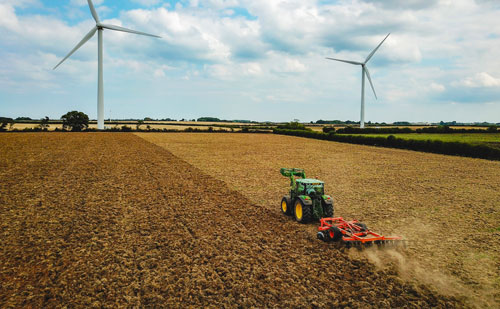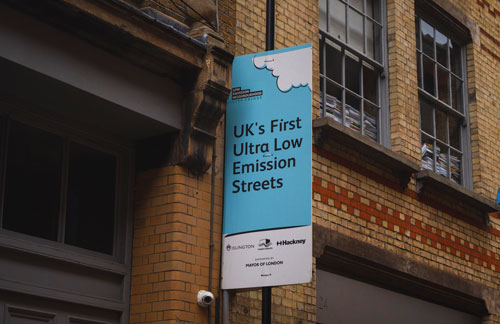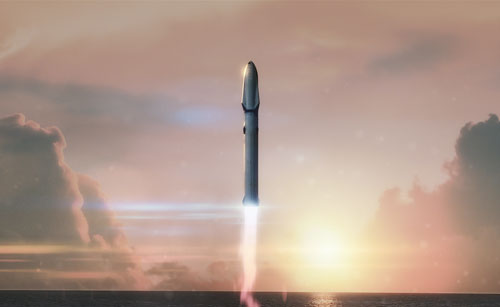There is much hope for the capabilities that space technologies will provide us within many industries, and for their potential to drive us toward a sustainable future on Earth and throughout the cosmos.
Inmarsat’s “What on Earth is the value of space” report highlighted some concerning data about how the general population views space and the role space technologies will play the future of humanity. Only 1 in 3 people globally were excited about space, and 97% saw space as a threat, with space junk and climate change as the primary concerns.
For space technologies to get the funding required to realise the capabilities and numerous applications they can offer to global communications, environmental protection and enterprise, they have to be at the forefront of international discussions.
The space industry has spent far too long communicating internally and not bringing the general consumer into the discussion about where we’re heading in space. We know that the space technologies released today are game-changing and will benefit even the most removed from them in some form or another, but people still don’t get to witness them first-hand.
At Holt Executive, we want to do our part to provoke discussion and debate to make the space industry a topic of global importance. One of the main hopes for using space in Inmarsat’s report is to help tackle the pinnacle threat to humanity, climate change. To spread awareness about how the space industry is looking to contribute to confronting this issue, we have put together a list of 7 space technologies that are revolutionising the race to net-zero.
SatelliteVu
Founded in 2016, SatelliteVu seeks to address the lack of high-resolution thermal imaging coming from space. With their satellite technology, they can use infrared technology to monitor the efficiency of economic activity around the globe, right down to the building level.
The ability to ensure that any structure on the planet is energy efficient will support businesses and governments to quantify their emissions and efficiencies to save costs and the earth. It is a truly innovative solution that significantly benefits our ecosystem, population, and economic entities.
ICEYE
With a history dating back to 2012, originating from a joint course between Aalto Business School and Stanford University, the ICEYE team became experts in the design and implementation of Synthetic Aperture Radar (SAR) microsatellites. After several rounds of seed financing and 16 satellites launched into orbit, they are now offering high-resolution radar imaging to commercial customers. Allowing them access to global monitoring, updated multiple times a day, that displays at night and penetrates through clouds.
This unprecedented ability to view the status of any location on Earth several times a day will help humanity consider the impacts of climate change, human activity and natural disasters. They are facilitating educated decisions about the direction of international climate policy, commerce, disaster management and ecological protection.
ICEYE makes powerful, near real-time Earth monitoring flexible, affordable and accessible to almost all industries. A true pioneer of space technologies, and we cannot wait to see how this offering develops for the good of our planet and people.
Astroscale
Since 2013, Astroscale has been developing several novel and exciting space technologies for space’s safe and sustainable development. These include life extension of spacecraft, space situational awareness, end of life and active debris removal to create a sustainable space environment.
This year they successfully launched their ELSA-d (demonstration) mission to showcase the technology necessary for debris docking and removal. The project’s end goal is to create feasible active debris removal capabilities that operate autonomously in orbit. Astroscale will put Elsa-d through tests in several conditions of increasing complexity and risk.
Whilst we understand that this technology doesn’t directly contribute to delivering net-zero emissions, we think it is equally important as it is helping to create a sustainable environment for all the other technologies listed in this article. To fully realise the capabilities of space to drive toward net-zero, we have to have safe orbits for them to operate. Astroscale’s game-changing efforts to facilitate this deserve highlighting.
GHGSat
GHGSat is the originator of cutting-edge space technology that monitors greenhouse gases in high-resolution using satellites equipped with their patented sensors. GHGSat’s spacecraft are capable of attributing emissions directly to individual facilities. The data collected is then transformed into actionable insights that can help customers optimise operations, reduce emissions and adhere to environmental standards.
Several case studies are available on their website. A recent press release states that GHGSat has detected the most significant emission from an individual facility it had ever seen, with nearly 90 tonnes of methane being released every hour from a mine in Russia. Once it had made this discovery, it could alert the mine owners to their findings.
Methane release is a natural product of mining but has a tremendous negative effect on the environment and can be more dangerous than carbon over time. This theme continues in GHGSat’s case studies, with numerous events discovered and awareness raised about the threat posed by human-made methane emissions.
The ability to pinpoint emissions leaks and facilities posing an immense risk to our ecosystem using satellite imagery could be vital to the success of environmental agencies in keeping track of emission output versus emissions regulations. It would make policing and accountability a reality, which is essential for the success of environmental protection.
Orbex
Headquartered in Scotland and founded in 2015, Orbex is a British aerospace company focusing on designing and manufacturing small commercial orbital rockets. Their Prime micro launcher is poised to become the first in a new generation of ultra-green launch systems. With a 3d-printed rocket engine, modern architecture increases efficiency by 20%. Prime is also designed to be reusable and will not leave any debris on Earth, in the Earth’s oceans, or the Earth’s atmosphere.
Comparable launches will release as much as 340 tonnes of CO2 from burning industry-standard rocket propellant. Orbex opts to use renewable biofuels for their launches which cut emissions by 90% compared to old-fashioned hydrocarbons.
Once Orbex demonstrates that it can feasibly launch smallsats into orbit with increased efficiency and reduced emissions, we hope that other launch companies follow suit and satellite operators opt for green launches.
It is vital that the part of the spacecraft process that leaves the most significant mark on the planet, the launch, is done sustainably and with the slightest environmental effect possible. Orbex are on the right track to make this a feasible reality in the future.
Skyrora
Another British Space start-up, Skyrora, design, manufacture and deploy rockets to open up the way for smallsat manufacturers to access space. Given the ecological burden of rocket launches, Skyrora set out to make the entire process as environmentally friendly as possible.
To achieve this, they are developing a rocket fuel that converts unrecyclable plastic waste into high-grade aerospace fuel called Ecosene. But it doesn’t stop there; they can now characterise the fuel to suit other transportation methods such as road and air travel.
Their low-temperature catalytic pyrolysis processes for creating Ecosene avoid some more damaging byproducts and lower CO2 emissions by 70% compared to classed fuel production methods.
There are also plans to create an automated, mobile Ecosene recycling plant which is customisable, modular and scalable. The plant will allow businesses to develop fuel themselves, removing harmful plastics from the environment and making it accessible and affordable.
Hydrosat
Hydrosat set out with one goal. To help Earth manage its most valuable resource: water. They provide geospatial intelligence to governments and commercial customers for food security, public safety and environmental applications. Their rapidly-refreshed thermal imagery and analytics are invaluable to farmers, ecologists and officials.
There are several examples of how this space technology can push us toward net-zero. Firstly, it allows farmers to reduce their water, energy and labour whilst simultaneously boosting crop yields which will, in turn, lower the emissions created by agricultural hotspots.
Secondly, ecologists and environmental scientists can monitor ecosystems, which helps to see how climates change as the world heats up—allowing them to use the data to make educated decisions about how to tackle these changes as they arise.
Finally, as the world continues to heat up, we know that there will be some implications, including an increased propensity for wildfires, further damaging our planet, and droughts which could have devastating effects on humanity. Hydrosat allows companies and governments to predict and monitor these as they increase in volume, potentially mitigating these disasters.

As you can see, these space technologies are revolutionising how we approach the monumental task of achieving net-zero. For the most part, it is fantastic to see how far these companies have come already, considering that many of them are still in their start-up phase and at the beginning of their respective journeys in space.
To take their offerings to the next level, they will require a significant amount of funding. These companies will only achieve this if these compelling use cases are demonstrated to the population so that investors understand that people care about the possibilities of what they can provide.
People care about protecting the planet and want new technologies to focus on addressing it. Those in the space and environmental industries need to work together to make space-based sustainability technologies a crucial part of climate strategy.
Related Article: How The Space Industry Can Stay Relevant In A Sustainable & Technological Future
< back to other articles



